76 papers:
 DATE-2015-FernandoWNKC #agile #algorithm #design #synthesis #using
DATE-2015-FernandoWNKC #agile #algorithm #design #synthesis #using- (AS)2: accelerator synthesis using algorithmic skeletons for rapid design space exploration (SF, MW, CN, AK, HC), pp. 305–308.
 STOC-2014-AbrahamGGNT #composition #graph
STOC-2014-AbrahamGGNT #composition #graph- Cops, robbers, and threatening skeletons: padded decomposition for minor-free graphs (IA, CG, AG, ON, KT), pp. 79–88.
 DHM-2014-DuWZHM #evolution #image #using
DHM-2014-DuWZHM #evolution #image #using- Human Skeleton Extraction of Depth Images Using the Polygon Evolution (HD, JW, XxZ, YH, LM), pp. 15–23.
 ICPR-2014-BuiNK #graph #music #using
ICPR-2014-BuiNK #graph #music #using- Staff Line Removal Using Line Adjacency Graph and Staff Line Skeleton for Camera-Based Printed Music Scores (HNB, ISN, SHK), pp. 2787–2789.
 ICPR-2014-CaiWES #segmentation
ICPR-2014-CaiWES #segmentation- Object Segmentation Based on Contour-Skeleton Duality (LC, FW, VE, HS), pp. 2537–2542.
 ICPR-2014-JinIHS #approach #using
ICPR-2014-JinIHS #approach #using- A New Approach of Arc Skeletonization for Tree-like Objects Using Minimum Cost Path (DJ, KSI, EAH, PKS), pp. 942–947.
 ICPR-2014-PandaKC #graph #random #scalability #summary #using #video
ICPR-2014-PandaKC #graph #random #scalability #summary #using #video- Scalable Video Summarization Using Skeleton Graph and Random Walk (RP, SKK, ASC), pp. 3481–3486.
 ICPR-2014-SerinoB #3d
ICPR-2014-SerinoB #3d- Pruning the 3D Curve Skeleton (LS, GSdB), pp. 2269–2274.
 ICPR-2014-SirinD #recognition
ICPR-2014-SirinD #recognition- Skeleton Filling Rate for Shape Recognition (YS, MFD), pp. 4005–4009.
 KDD-2014-LiuZXJ0 #categorisation #visualisation
KDD-2014-LiuZXJ0 #categorisation #visualisation- Temporal skeletonization on sequential data: patterns, categorization, and visualization (CL, KZ, HX, GJ, QY), pp. 1336–1345.
 SAC-2014-AlexandreMP #algorithm #multi #on the
SAC-2014-AlexandreMP #algorithm #multi #on the- On the support of task-parallel algorithmic skeletons for multi-GPU computing (FA, RM, HP), pp. 880–885.
 SAC-2014-AnderssonDA #artificial reality #identification #using
SAC-2014-AnderssonDA #artificial reality #identification #using- Anthropometric and human gait identification using skeleton data from Kinect sensor (VOA, RD, RMdA), pp. 60–61.
 PPoPP-2014-AgustonBH #parallel
PPoPP-2014-AgustonBH #parallel- Parallelization hints via code skeletonization (CA, YBA, GH), pp. 373–374.
 PPoPP-2014-RodriguesJDH #algorithm #clustering #interface #named #programming
PPoPP-2014-RodriguesJDH #algorithm #clustering #interface #named #programming- Triolet: a programming system that unifies algorithmic skeleton interfaces for high-performance cluster computing (CIR, TBJ, AD, WmWH), pp. 247–258.
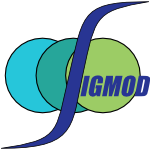 SIGMOD-2013-JindalQM #flexibility #named
SIGMOD-2013-JindalQM #flexibility #named- CARTILAGE: adding flexibility to the Hadoop skeleton (AJ, JAQR, SM), pp. 1057–1060.
 SAC-2013-AraujoGA #artificial reality #identification #towards #using
SAC-2013-AraujoGA #artificial reality #identification #towards #using- Towards skeleton biometric identification using the microsoft kinect sensor (RMA, GG, VA), pp. 21–26.
 ICLP-J-2013-Tarau #prolog
ICLP-J-2013-Tarau #prolog- Compact serialization of Prolog terms (with catalan skeletons, cantor tupling and Gödel numberings) (PT), pp. 847–861.
 TLCA-2013-Clairambault #bound #linear #reduction
TLCA-2013-Clairambault #bound #linear #reduction- Bounding Skeletons, Locally Scoped Terms and Exact Bounds for Linear Head Reduction (PC), pp. 109–124.
 SIGMOD-2012-TeubnerWN #automaton #configuration management
SIGMOD-2012-TeubnerWN #automaton #configuration management- Skeleton automata for FPGAs: reconfiguring without reconstructing (JT, LW, CN), pp. 229–240.
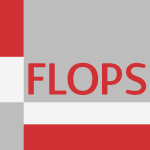 FLOPS-2012-Lobachev #parallel #termination
FLOPS-2012-Lobachev #parallel #termination- Parallel Computation Skeletons with Premature Termination Property (OL), pp. 197–212.
 IFL-2012-DieterleHBL #composition #parallel
IFL-2012-DieterleHBL #composition #parallel- Iterating Skeletons — Structured Parallelism by Composition (MD, TH, JB, RL), pp. 18–36.
 ICEIS-v2-2012-HanadaOKM #java #ml #ocl #uml
ICEIS-v2-2012-HanadaOKM #java #ml #ocl #uml- Practical Application of a Translation Tool from UML/OCL to Java Skeleton with JML Annotation (KH, KO, SK, KM), pp. 389–394.
 ICPR-2012-FelhiBT #detection #image
ICPR-2012-FelhiBT #detection #image- A skeleton based descriptor for detecting text in real scene images (MF, NB, ST), pp. 282–285.
 ICPR-2012-SunBM #learning
ICPR-2012-SunBM #learning- Unsupervised skeleton learning for manifold denoising (KS, EB, SMM), pp. 2719–2722.
 ICPR-2012-ZhangL #detection #using
ICPR-2012-ZhangL #detection #using- Arbitrarily oriented text detection using geodesic distances between corners and skeletons (YZ, JL), pp. 1896–1899.
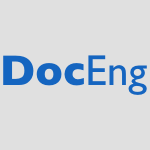 DocEng-2011-StoppeG
DocEng-2011-StoppeG- Skeleton comparisons: the junction neighbourhood histogram (JS, BG), pp. 93–96.
 HCI-DDA-2011-HuSZXW #image
HCI-DDA-2011-HuSZXW #image- Image Skeletonization Based on Curve Skeleton Extraction (XH, BS, HZ, BX, HW), pp. 580–587.
 DocEng-2010-StoppeG
DocEng-2010-StoppeG- Down to the bone: simplifying skeletons (JS, BG), pp. 215–218.
 SIGMOD-2010-BaoDKR #using #workflow
SIGMOD-2010-BaoDKR #using #workflow- An optimal labeling scheme for workflow provenance using skeleton labels (ZB, SBD, SK, SR), pp. 711–722.
 FLOPS-2010-DieterleBL #distributed
FLOPS-2010-DieterleBL #distributed- A Skeleton for Distributed Work Pools in Eden (MD, JB, RL), pp. 337–353.
 ICPR-2010-SerinoBA #composition
ICPR-2010-SerinoBA #composition- Object Decomposition Via Curvilinear Skeleton Partition (LS, GSdB, CA), pp. 4081–4084.
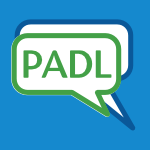 PADL-2010-DieterleHL #composition #using
PADL-2010-DieterleHL #composition #using- Skeleton Composition Using Remote Data (MD, TH, RL), pp. 73–87.
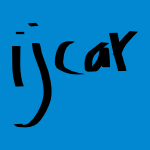 IJCAR-2010-MouraB #debugging #development #reasoning
IJCAR-2010-MouraB #debugging #development #reasoning- Bugs, Moles and Skeletons: Symbolic Reasoning for Software Development (LMdM, NB), pp. 400–411.
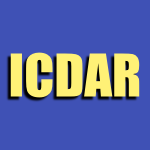 ICDAR-2009-WshahSG #segmentation
ICDAR-2009-WshahSG #segmentation- Segmentation of Arabic Handwriting Based on both Contour and Skeleton Segmentation (SW, ZS, VG), pp. 793–797.
 ICPR-2008-TiernyVD #3d #performance #precise
ICPR-2008-TiernyVD #3d #performance #precise- Fast and precise kinematic skeleton extraction of 3D dynamic meshes (JT, JPV, MD), pp. 1–4.
 PADL-2008-BertholdDLP
PADL-2008-BertholdDLP- Hierarchical Master-Worker Skeletons (JB, MD, RL, SP), pp. 248–264.
 ICDAR-2007-LebourgeoisE
ICDAR-2007-LebourgeoisE- Skeletonization by Gradient Regularization and Diffusion (FL, HE), pp. 1118–1122.
 QAPL-2007-YaikhomCGH #approach #modelling #performance #using
QAPL-2007-YaikhomCGH #approach #modelling #performance #using- A Structural Approach for Modelling Performance of Systems Using Skeletons (GY, MC, SG, JH), pp. 167–183.
 ICPR-v1-2006-WangB #3d #automation #estimation #using
ICPR-v1-2006-WangB #3d #automation #estimation #using- Automatic Estimation of 3D Transformations using Skeletons for Object Alignment (TW, AB), pp. 51–54.
 ICPR-v2-2006-EedeMTSD #canonical
ICPR-v2-2006-EedeMTSD #canonical- Canonical Skeletons for Shape Matching (MvE, DM, ACT, CS, SJD), pp. 64–69.
 CEFP-2005-ZsokHH #design #distributed
CEFP-2005-ZsokHH #design #distributed- Designing Distributed Computational Skeletons in D-Clean and D-Box (VZ, ZH, ZH), pp. 223–256.
 SIGAda-2005-NaeserLA #verification
SIGAda-2005-NaeserLA #verification- Temporal skeletons for verifying time (GN, KL, LA), pp. 49–56.
 ICPR-v1-2004-Strand
ICPR-v1-2004-Strand- Surface Skeletons in Grids with Non-Cubic Voxels (RS), pp. 548–551.
 ICPR-v2-2004-BajaN #2d #3d #approach
ICPR-v2-2004-BajaN #2d #3d #approach- 2D Grey-level Skeleton Computation: A Discrete 3D Approach (GSdB, IN), pp. 455–458.
 ICPR-v4-2004-TeleaSD #abstraction
ICPR-v4-2004-TeleaSD #abstraction- Optimal Inference for Hierarchical Skeleton Abstraction (ACT, CS, SJD), pp. 19–22.
 SAC-2004-SilvaCG #image #using
SAC-2004-SilvaCG #image #using- Diagnosis of lung nodule using Gini coefficient and skeletonization in computerized tomography images (ACS, PCPC, MG), pp. 243–248.
 ICDAR-2003-DawoudK #approach #image
ICDAR-2003-DawoudK #approach #image- New Approach for the Skeletonization of Handwritten Characters in Gray-Level Images (AD, MK), pp. 1233–1237.
 ESOP-2002-HuIT #cumulative #parallel
ESOP-2002-HuIT #cumulative #parallel- An Accumulative Parallel Skeleton for All (ZH, HI, MT), pp. 83–97.
 ICPR-v1-2002-BorgeforsS #2d #distance #fuzzy
ICPR-v1-2002-BorgeforsS #2d #distance #fuzzy- Fuzzy Border Distance Transforms and Their Use in 2D Skeletonization (GB, SS), pp. 180–183.
 ICPR-v1-2002-PalenichkaZ #modelling #multi #self #using
ICPR-v1-2002-PalenichkaZ #modelling #multi #self #using- Multi-Scale Model-Based Skeletonization of Object Shapes Using Self-Organizing Maps (RMP, MBZ), pp. 143–146.
 ICPR-v3-2002-MekadaT #distance #using
ICPR-v3-2002-MekadaT #distance #using- Anchor Point Thinning Using a Skeleton Based on the Euclidean Distance Transformation (YM, JiT), pp. 923–926.
 ICPR-v3-2002-ParkO #composition
ICPR-v3-2002-ParkO #composition- Shape Decomposition and Skeleton Extraction of Character Patterns (JSP, ISO), pp. 411–414.
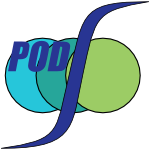 PODS-2001-RajaramanU #query #using
PODS-2001-RajaramanU #query #using- Querying Websites Using Compact Skeletons (AR, JDU).
 IFL-2001-Grelck #array #memory management #optimisation
IFL-2001-Grelck #array #memory management #optimisation- Optimizations on Array Skeletons in a Shared Memory Environment (CG), pp. 36–54.
 IFL-2001-PenaS #type system
IFL-2001-PenaS #type system- Sized Types for Typing Eden Skeletons (RP, CS), pp. 1–17.
 IFL-2000-KlusikLPR #implementation #parallel #programming
IFL-2000-KlusikLPR #implementation #parallel #programming- Implementation Skeletons in Eden: Low-Effort Parallel Programming (UK, RL, SP, FR), pp. 71–88.
 ICPR-v3-2000-ChoiLS #algorithm #performance
ICPR-v3-2000-ChoiLS #algorithm #performance- An Efficient and Accurate Algorithm for Extracting a Skeleton (WPC, KML, WCS), pp. 3750–3753.
 ICPR-v3-2000-KeglK #linear #using
ICPR-v3-2000-KeglK #linear #using- Piecewise Linear Skeletonization Using Principal Curves (BK, AK), pp. 3135–3138.
 ICPR-v3-2000-RomeroRT #performance
ICPR-v3-2000-RomeroRT #performance- Fast Skeletonization of Spatially Encoded Objects (FR, LR, FT), pp. 3514–3517.
 IFL-1999-HammondP #algorithm #haskell #named
IFL-1999-HammondP #algorithm #haskell #named- HaskSkel: Algorithmic Skeletons in Haskell (KH, ÁJRP), pp. 181–198.
 ICPR-1998-BorgeforsRB
ICPR-1998-BorgeforsRB- Coarse-to-fine skeletons from grey-level pyramids (GB, GR, GSdB), pp. 400–402.
 ICPR-1998-NakamuraEIH #algorithm #using
ICPR-1998-NakamuraEIH #algorithm #using- Skeleton revision algorithm using maximal circles (TN, HE, HI, LH), pp. 1607–1609.
 ICDAR-1997-VossepoelSD #memory management #performance
ICDAR-1997-VossepoelSD #memory management #performance- Memory efficient skeletonization of utility maps (AMV, KS, CFPD), pp. 797–800.
 TRI-Ada-1996-DwyerCR #ada #concurrent #independence
TRI-Ada-1996-DwyerCR #ada #concurrent #independence- An Application-Independent Concurrency Skeleton in Ada 95 (MBD, MJC, ER), pp. 179–192.
 ICPR-1996-AblameykoFM #composition
ICPR-1996-AblameykoFM #composition- Shape decomposition by (d1, d2)-weighted skeleton and directional information (SA, MF, AM), pp. 275–279.
 ICPR-1996-BorgeforsB #multi
ICPR-1996-BorgeforsB #multi- Multiresolution skeletonization in binary pyramids (GB, GSdB), pp. 570–574.
 ICPR-1996-ChehadehCB #adaptation #algorithm #distance #using
ICPR-1996-ChehadehCB #adaptation #algorithm #distance #using- A skeletonization algorithm using chamfer distance transformation adapted to rectangular grids (YC, DC, PB), pp. 131–135.
 ICPR-1996-Chen #detection #parallel
ICPR-1996-Chen #detection #parallel- The use of hidden deletable pixel detection to obtain bias-reduced skeletons in parallel thinning (YSC), pp. 91–95.
 ICPR-1996-ZhangW #algorithm #parallel
ICPR-1996-ZhangW #algorithm #parallel- A parallel thinning algorithm with two-subiteration that generates one-pixel-wide skeletons (EYYZ, PSPW), pp. 457–461.
 PLILP-1996-GalanPP #functional #process
PLILP-1996-GalanPP #functional #process- Functional Skeletons Generate Process Topologies in Eden (LAG, CP, RP), pp. 289–303.
 HPDC-1996-BotorogK #algorithm #distributed #imperative #named #performance #programming
HPDC-1996-BotorogK #algorithm #distributed #imperative #named #performance #programming- Skil: An Imperative Language with Algorithmic Skeletons for Efficient Distributed Programming (GHB, HK), pp. 243–252.
 ICDAR-v2-1995-FanCW #approach #image
ICDAR-v2-1995-FanCW #approach #image- A new vectorization-based approach to the skeletonization of binary images (KCF, DFC, MGW), pp. 627–630.
 PPoPP-1995-DarlingtonGTY #composition #parallel
PPoPP-1995-DarlingtonGTY #composition #parallel- Parallel Skeletons for Structured Composition (JD, YG, HWT, JY), pp. 19–28.
 ICDAR-1993-HoriT
ICDAR-1993-HoriT- Raster-to-vector conversion by line fitting based on contours and skeletons (OH, ST), pp. 353–358.
 ICDAR-1993-PettierC #representation
ICDAR-1993-PettierC #representation- Script representation by a generalized skeleton (JCP, JC), pp. 850–853.
 ICSE-1981-PenedoBE #algorithm #concurrent #generative
ICSE-1981-PenedoBE #algorithm #concurrent #generative- An Algorithm to Support Code-Skeleton Generation for Concurrent Systems (MH(P, DMB, GE), pp. 125–135.
 DATE-2015-FernandoWNKC #agile #algorithm #design #synthesis #using
DATE-2015-FernandoWNKC #agile #algorithm #design #synthesis #using STOC-2014-AbrahamGGNT #composition #graph
STOC-2014-AbrahamGGNT #composition #graph DHM-2014-DuWZHM #evolution #image #using
DHM-2014-DuWZHM #evolution #image #using ICPR-2014-BuiNK #graph #music #using
ICPR-2014-BuiNK #graph #music #using ICPR-2014-CaiWES #segmentation
ICPR-2014-CaiWES #segmentation ICPR-2014-JinIHS #approach #using
ICPR-2014-JinIHS #approach #using ICPR-2014-PandaKC #graph #random #scalability #summary #using #video
ICPR-2014-PandaKC #graph #random #scalability #summary #using #video ICPR-2014-SerinoB #3d
ICPR-2014-SerinoB #3d ICPR-2014-SirinD #recognition
ICPR-2014-SirinD #recognition KDD-2014-LiuZXJ0 #categorisation #visualisation
KDD-2014-LiuZXJ0 #categorisation #visualisation SAC-2014-AlexandreMP #algorithm #multi #on the
SAC-2014-AlexandreMP #algorithm #multi #on the SAC-2014-AnderssonDA #artificial reality #identification #using
SAC-2014-AnderssonDA #artificial reality #identification #using PPoPP-2014-AgustonBH #parallel
PPoPP-2014-AgustonBH #parallel PPoPP-2014-RodriguesJDH #algorithm #clustering #interface #named #programming
PPoPP-2014-RodriguesJDH #algorithm #clustering #interface #named #programming SIGMOD-2013-JindalQM #flexibility #named
SIGMOD-2013-JindalQM #flexibility #named SAC-2013-AraujoGA #artificial reality #identification #towards #using
SAC-2013-AraujoGA #artificial reality #identification #towards #using ICLP-J-2013-Tarau #prolog
ICLP-J-2013-Tarau #prolog TLCA-2013-Clairambault #bound #linear #reduction
TLCA-2013-Clairambault #bound #linear #reduction SIGMOD-2012-TeubnerWN #automaton #configuration management
SIGMOD-2012-TeubnerWN #automaton #configuration management FLOPS-2012-Lobachev #parallel #termination
FLOPS-2012-Lobachev #parallel #termination IFL-2012-DieterleHBL #composition #parallel
IFL-2012-DieterleHBL #composition #parallel ICEIS-v2-2012-HanadaOKM #java #ml #ocl #uml
ICEIS-v2-2012-HanadaOKM #java #ml #ocl #uml ICPR-2012-FelhiBT #detection #image
ICPR-2012-FelhiBT #detection #image ICPR-2012-SunBM #learning
ICPR-2012-SunBM #learning ICPR-2012-ZhangL #detection #using
ICPR-2012-ZhangL #detection #using DocEng-2011-StoppeG
DocEng-2011-StoppeG HCI-DDA-2011-HuSZXW #image
HCI-DDA-2011-HuSZXW #image DocEng-2010-StoppeG
DocEng-2010-StoppeG SIGMOD-2010-BaoDKR #using #workflow
SIGMOD-2010-BaoDKR #using #workflow FLOPS-2010-DieterleBL #distributed
FLOPS-2010-DieterleBL #distributed ICPR-2010-SerinoBA #composition
ICPR-2010-SerinoBA #composition PADL-2010-DieterleHL #composition #using
PADL-2010-DieterleHL #composition #using IJCAR-2010-MouraB #debugging #development #reasoning
IJCAR-2010-MouraB #debugging #development #reasoning ICDAR-2009-WshahSG #segmentation
ICDAR-2009-WshahSG #segmentation ICPR-2008-TiernyVD #3d #performance #precise
ICPR-2008-TiernyVD #3d #performance #precise PADL-2008-BertholdDLP
PADL-2008-BertholdDLP ICDAR-2007-LebourgeoisE
ICDAR-2007-LebourgeoisE QAPL-2007-YaikhomCGH #approach #modelling #performance #using
QAPL-2007-YaikhomCGH #approach #modelling #performance #using ICPR-v1-2006-WangB #3d #automation #estimation #using
ICPR-v1-2006-WangB #3d #automation #estimation #using ICPR-v2-2006-EedeMTSD #canonical
ICPR-v2-2006-EedeMTSD #canonical CEFP-2005-ZsokHH #design #distributed
CEFP-2005-ZsokHH #design #distributed SIGAda-2005-NaeserLA #verification
SIGAda-2005-NaeserLA #verification ICPR-v1-2004-Strand
ICPR-v1-2004-Strand ICPR-v2-2004-BajaN #2d #3d #approach
ICPR-v2-2004-BajaN #2d #3d #approach ICPR-v4-2004-TeleaSD #abstraction
ICPR-v4-2004-TeleaSD #abstraction SAC-2004-SilvaCG #image #using
SAC-2004-SilvaCG #image #using ICDAR-2003-DawoudK #approach #image
ICDAR-2003-DawoudK #approach #image ESOP-2002-HuIT #cumulative #parallel
ESOP-2002-HuIT #cumulative #parallel ICPR-v1-2002-BorgeforsS #2d #distance #fuzzy
ICPR-v1-2002-BorgeforsS #2d #distance #fuzzy ICPR-v1-2002-PalenichkaZ #modelling #multi #self #using
ICPR-v1-2002-PalenichkaZ #modelling #multi #self #using ICPR-v3-2002-MekadaT #distance #using
ICPR-v3-2002-MekadaT #distance #using ICPR-v3-2002-ParkO #composition
ICPR-v3-2002-ParkO #composition PODS-2001-RajaramanU #query #using
PODS-2001-RajaramanU #query #using IFL-2001-Grelck #array #memory management #optimisation
IFL-2001-Grelck #array #memory management #optimisation IFL-2001-PenaS #type system
IFL-2001-PenaS #type system IFL-2000-KlusikLPR #implementation #parallel #programming
IFL-2000-KlusikLPR #implementation #parallel #programming ICPR-v3-2000-ChoiLS #algorithm #performance
ICPR-v3-2000-ChoiLS #algorithm #performance ICPR-v3-2000-KeglK #linear #using
ICPR-v3-2000-KeglK #linear #using ICPR-v3-2000-RomeroRT #performance
ICPR-v3-2000-RomeroRT #performance IFL-1999-HammondP #algorithm #haskell #named
IFL-1999-HammondP #algorithm #haskell #named ICPR-1998-BorgeforsRB
ICPR-1998-BorgeforsRB ICPR-1998-NakamuraEIH #algorithm #using
ICPR-1998-NakamuraEIH #algorithm #using ICDAR-1997-VossepoelSD #memory management #performance
ICDAR-1997-VossepoelSD #memory management #performance TRI-Ada-1996-DwyerCR #ada #concurrent #independence
TRI-Ada-1996-DwyerCR #ada #concurrent #independence ICPR-1996-AblameykoFM #composition
ICPR-1996-AblameykoFM #composition ICPR-1996-BorgeforsB #multi
ICPR-1996-BorgeforsB #multi ICPR-1996-ChehadehCB #adaptation #algorithm #distance #using
ICPR-1996-ChehadehCB #adaptation #algorithm #distance #using ICPR-1996-Chen #detection #parallel
ICPR-1996-Chen #detection #parallel ICPR-1996-ZhangW #algorithm #parallel
ICPR-1996-ZhangW #algorithm #parallel PLILP-1996-GalanPP #functional #process
PLILP-1996-GalanPP #functional #process HPDC-1996-BotorogK #algorithm #distributed #imperative #named #performance #programming
HPDC-1996-BotorogK #algorithm #distributed #imperative #named #performance #programming ICDAR-v2-1995-FanCW #approach #image
ICDAR-v2-1995-FanCW #approach #image PPoPP-1995-DarlingtonGTY #composition #parallel
PPoPP-1995-DarlingtonGTY #composition #parallel ICDAR-1993-HoriT
ICDAR-1993-HoriT ICDAR-1993-PettierC #representation
ICDAR-1993-PettierC #representation ICSE-1981-PenedoBE #algorithm #concurrent #generative
ICSE-1981-PenedoBE #algorithm #concurrent #generative









